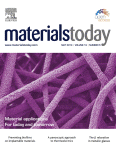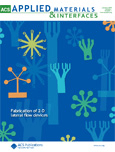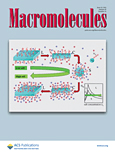
MRS Advances
Scope & Guideline
Elevating Academic Dialogue in Material Research
Introduction
Aims and Scopes
- Materials Synthesis and Characterization:
The journal covers a broad spectrum of synthesis methods, including green synthesis, electrochemical deposition, and advanced nanofabrication techniques. It emphasizes the importance of characterizing materials at multiple scales, from atomic to macroscopic levels, using techniques like X-ray diffraction, electron microscopy, and spectroscopy. - Nanomaterials and Nanotechnology:
Research on nanostructured materials, including their fabrication, properties, and applications, is a core focus. This includes studies on quantum dots, nanocomposites, and 2D materials, exploring their unique physical and chemical properties for various applications in electronics, energy, and environmental remediation. - Energy Materials and Sustainability:
MRS Advances publishes work related to the development of materials for energy applications, including solar cells, batteries, and photocatalysts. There is a consistent emphasis on sustainable practices, such as recycling materials and utilizing renewable resources in synthesis. - Biomaterials and Biomedical Applications:
The journal features research on biomaterials, including their design, synthesis, and application in healthcare, such as drug delivery systems, tissue engineering scaffolds, and antimicrobial materials. The integration of materials science with biological applications is a significant area of interest. - Computational Materials Science:
The use of computational methods to predict material properties, optimize synthesis routes, and model performance in applications is a prominent theme. This includes machine learning approaches and theoretical studies that guide experimental work.
Trending and Emerging
- Sustainable Materials and Green Chemistry:
There is a significant increase in research focused on sustainable materials and green synthesis methods. This includes studies on biodegradable materials, recycling processes, and environmentally friendly fabrication techniques, reflecting a global push towards sustainability. - Advanced Nanocomposites:
The trend towards developing advanced nanocomposites that combine multiple functionalities is on the rise. This includes hybrid materials that integrate metals, polymers, and nanostructures for applications in sensors, energy storage, and biomedical devices. - Machine Learning and Data-Driven Approaches:
The integration of machine learning and data analytics in materials research has gained momentum. Researchers are increasingly applying these techniques to predict material properties, optimize processes, and analyze complex datasets, indicating a shift towards computationally driven materials science. - Smart and Responsive Materials:
Research on smart materials that respond to external stimuli (such as temperature, pH, or light) is becoming increasingly prominent. This encompasses applications in soft robotics, adaptive coatings, and self-healing materials, reflecting innovative directions in materials development. - Electrochemistry and Energy Storage:
There is a heightened focus on electrochemical processes, particularly in the context of energy storage technologies such as batteries and supercapacitors. Studies addressing the performance, efficiency, and sustainability of these systems are trending, aligning with global energy challenges.
Declining or Waning
- Traditional Bulk Materials:
Research focusing solely on bulk materials without incorporating nanostructures or advanced composites appears to be waning. As the field progresses towards nanotechnology and smart materials, studies on conventional bulk materials have decreased. - Single-Use Materials:
The publication of studies centered around single-use materials, particularly those without considerations for sustainability or recyclability, has become less common. There is a growing shift towards materials that offer longevity and environmental benefits. - Basic Characterization Techniques:
Papers focusing exclusively on basic characterization methods (e.g., simple microscopy or standard spectroscopic techniques) without integrating advanced, multi-scale approaches are becoming less frequent. The trend favors comprehensive studies that combine multiple characterization techniques. - Theoretical Studies with Limited Experimental Validation:
While theoretical approaches remain important, there is a noticeable decline in purely theoretical studies that lack experimental validation or practical applications. The journal increasingly favors papers that demonstrate a strong connection between theory and practice.
Similar Journals

Materials Today
Advancing the Frontiers of Materials ScienceMaterials Today is a premier academic journal published by Elsevier Science Ltd, specializing in the dynamic fields of materials science, mechanical engineering, and condensed matter physics. Established in 1999, the journal has garnered an enviable reputation, consistently ranking in the Q1 category across multiple disciplines including mechanics of materials and general materials science, reflecting its influence and high-quality research output. With an impressive Scopus ranking—4th in both mechanical engineering and mechanics of materials, and 6th in condensed matter physics—Materials Today serves as an essential resource for researchers, professionals, and students seeking to stay at the forefront of developments in material innovations and applications. The journal is known for its commitment to publishing significant research findings and reviews, making it a vital platform for disseminating knowledge and fostering collaboration in the rapidly evolving materials field. Although it does not offer open access, its robust impact factor underscores the importance of the content published, ensuring wide visibility and citation among the academic community. Explore the rich tapestry of materials research with Materials Today, where groundbreaking insights pave the way for future technological advancements.

Nano Materials Science
Exploring the Future of Nanotechnology and Engineering.Nano Materials Science is a premier open-access journal dedicated to the dissemination of groundbreaking research in the fields of nanotechnology, materials science, and chemical engineering. Published by KEAI PUBLISHING LTD, this journal has quickly established itself as a leading platform in its area since its inception in 2019, with impressive rankings in the Scopus database, holding a Q1 position across multiple categories, including Chemical Engineering and Materials Science. Based in Beijing, China, Nano Materials Science provides researchers and practitioners access to a wealth of high-quality peer-reviewed articles, fostering innovation and collaboration within the scientific community. With its impact factor steadily rising and a commitment to open access, the journal aims to bridge the gap between theoretical research and practical applications, making it an essential resource for professionals and students eager to stay at the forefront of materials research and nanotechnology advancements.

Korean Journal of Materials Research
Bridging Gaps in Research and PracticeKorean Journal of Materials Research is a pivotal publication in the field of materials science, offering a platform for innovative research and comprehensive reviews in miscellaneous materials applications. Published by the MATERIALS RESEARCH SOC KOREA, this journal has been a valuable resource since its inception in 2007 and continues to disseminate vital findings through 2024. Although currently categorized in Q4 of the Materials Science quartiles, the journal is committed to advancing knowledge and fostering research collaboration within the scientific community. With an ISSN of 1225-0562 and an E-ISSN of 2287-7258, the journal aims to bridge gaps in research and practice, appealing to a diverse audience of researchers, professionals, and students interested in the latest advancements in materials science. While access to content may not be open, the journal's impact in the regional and global research landscape is steadily growing, as indicated by its Scopus ranking in the 7th percentile of General Materials Science. Engage with the Korean Journal of Materials Research to stay at the forefront of materials innovation!

ACS Applied Materials & Interfaces
Exploring Breakthroughs in Materials Science and InterfacesACS Applied Materials & Interfaces, published by the American Chemical Society, stands as a leading journal in the field of applied materials, nanotechnology, and interdisciplinary research in medicine. With an impressive Impact Factor that places it in the Q1 category across Materials Science, Medicine, and Nanoscience and Nanotechnology, this journal consistently ranks among the top tier, evidencing its significance and influence in advancing scientific knowledge. The journal’s scopus ranking of 33 out of 463 in General Materials Science further underscores its critical role in disseminating innovative and high-quality research. Although it is not an open-access journal, a diverse range of access options is available, ensuring that vital research findings are accessible to a broad audience of researchers, professionals, and students. Targeting breakthroughs in the synthesis, characterization, and application of materials and interfaces, ACS Applied Materials & Interfaces serves as a pivotal platform for publishing cutting-edge studies essential for future technological advancements.

MACROMOLECULES
Transforming Materials Science Through Cutting-Edge ResearchMACROMOLECULES, published by the American Chemical Society, is a premier journal in the fields of inorganic chemistry, materials chemistry, organic chemistry, and polymers and plastics. Since its inception in 1968, this influential journal has established itself as a vital resource for researchers, professionals, and students, showcasing cutting-edge research and advancements in the study of macromolecules and high-performance polymers. With a distinguished impact factor and consistently ranking in the top quartiles (Q1) across its relevant categories, MACROMOLECULES is recognized for its high-quality publications that contribute significantly to the scientific community. The journal is accessible in both print and electronic formats, facilitating rapid dissemination of knowledge. By providing a platform for innovative studies and groundbreaking discoveries, MACROMOLECULES continues to play a crucial role in shaping the future of materials science and polymer research.

APPLIED PHYSICS A-MATERIALS SCIENCE & PROCESSING
Advancing Knowledge at the Intersection of Physics and EngineeringApplied Physics A: Materials Science & Processing, published by Springer Heidelberg, is an esteemed academic journal that has been at the forefront of innovative research since its establishment in 1995. With a strong focus on the intersection of physics, materials science, and engineering, this journal explores cutting-edge developments and applications that influence contemporary materials research. Categorized in the Q2 quartile across both Chemistry and Materials Science, it boasts respectable rankings in Scopus, affirming its influence and reach within the academic community. Although primarily a subscription-based journal, it is dedicated to disseminating high-quality research findings that advance our understanding in these fields. Researchers, professionals, and students alike can benefit from the journal's commitment to publishing comprehensive studies, methodological advancements, and insightful reviews that push the boundaries of knowledge in materials science.

Frontiers of Materials Science
Pioneering Discoveries in Advanced Materials and ApplicationsFrontiers of Materials Science is a groundbreaking journal dedicated to exploring advanced materials and their applications within the ever-evolving landscape of materials science. Published by HIGHER EDUCATION PRESS, this journal offers a crucial platform for scholars and practitioners seeking to disseminate innovative research findings that foster interdisciplinary collaboration. Since its inception in 2011, the journal has enjoyed a notable Q2 ranking in the category of Materials Science (miscellaneous) as of 2023, positioning it among the noteworthy publications in the field with a Scopus rank of #222 out of 463. While predominantly published in China, the journal is committed to open access principles, allowing global accessibility to cutting-edge research. With its comprehensive coverage spanning materials synthesis, characterization, properties, and applications, Frontiers of Materials Science not only serves as a repository for academia but also bridges the gap between research and industry, making it an indispensable resource for researchers, professionals, and students alike.

Materials Futures
Advancing the frontiers of biomaterials research.Materials Futures, an esteemed journal published by IOP Publishing Ltd, stands out as a pivotal resource in the field of Materials Science, with a particular emphasis on Biomaterials. Launched in 2022 and operating under an Open Access model, the journal aims to foster accessibility and rapid dissemination of pioneering research, thus catering to the diverse needs of researchers, professionals, and students globally. With a commendable Scopus Rank of #46 out of 137 in its category, placing it in the 66th percentile, and recognized as a Q1 journal as of 2023, Materials Futures provides a vital platform for cutting-edge studies and innovations that address contemporary challenges in materials science. As the journal evolves through its convergence period from 2022 to 2024, it continues to attract high-quality submissions aimed at advancing knowledge and applications within the biomaterials sector, reflecting its commitment to contributing vital insights and fostering collaboration across disciplines. Explore Materials Futures for your research endeavors and join a community dedicated to shaping the future of materials.

Nano Express
Bridging theory and application in materials science.Nano Express is an esteemed open-access journal published by IOP Publishing Ltd, dedicated to advancing research in the fields of nanotechnology and materials science. Since its launch in 2020, the journal has swiftly established itself as a vital resource for researchers and professionals, garnering significant recognition in various domains, including biomaterials, electronic, optical and magnetic materials, and polymers and plastics. With a commendable categorization in Scopus quartiles, it ranks in Q2 for Electronic, Optical and Magnetic Materials, and maintains a top percentile in several others, exemplifying its commitment to high-quality research dissemination. Located in the United Kingdom, this journal fosters a global dialogue among experts and newcomers alike, facilitating open access to innovative research that drives the future of nanotechnology. By offering a platform for groundbreaking studies and reviews, Nano Express aims to bridge the gap between theoretical understanding and practical application, championing the development of next-generation materials that have the potential to transform various industries.

Journal of Nano Research
Pioneering Discoveries in Materials ScienceThe Journal of Nano Research, published by Trans Tech Publications Ltd, is a distinguished academic journal dedicated to the rapidly evolving field of nanotechnology and materials science. With an ISSN of 1662-5250 and an E-ISSN of 1661-9897, the journal has been an important platform for researchers and professionals since its inception in 2008, continuing to provide high-quality peer-reviewed research through to 2024. Nestled in Switzerland, the Journal of Nano Research plays a pivotal role in disseminating cutting-edge findings, as recognized by its categorization in Q3 for Materials Science and Physics while being positioned in Q4 for Nanoscience and Nanotechnology as of 2023. With Scopus rankings highlighting its impact, including Rank #129 in general Physics and Astronomy and Rank #300 in Materials Science, this journal is crucial for academics seeking to stay ahead in research trends and innovations in nano-related disciplines. Although it operates under a subscription model, the journal's objectives include fostering collaboration and knowledge-sharing among researchers, making it an invaluable resource for anyone immersed in the world of nanotechnology.